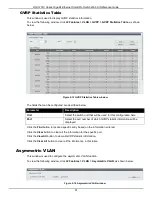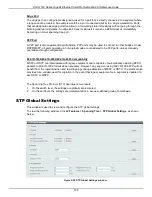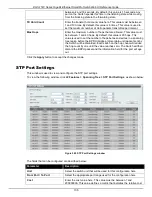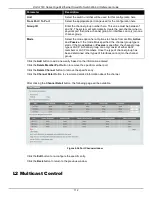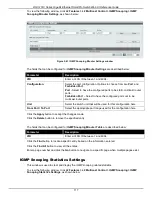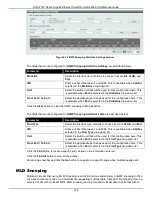
DGS-1510 Series Gigabit Ethernet SmartPro Switch Web UI Reference Guide
103
Edge Port
The edge port is a configurable designation used for a port that is directly connected to a segment where
a loop cannot be created. An example would be a port connected directly to a single workstation. Ports
that are designated as edge ports transition to a forwarding state immediately without going through the
listening and learning states. An edge port loses its status if it receives a BPDU packet, immediately
becoming a normal spanning tree port.
P2P Port
A P2P port is also capable of rapid transition. P2P ports may be used to connect to other bridges. Under
RSTP/MSTP, all ports operating in full-duplex mode are considered to be P2P ports, unless manually
overridden through configuration.
802.1D-1998/802.1D-2004/802.1Q-2005 Compatibility
MSTP or RSTP can interoperate with legacy equipment and is capable of automatically adjusting BPDU
packets to 802.1D-1998 format when necessary. However, any segment using 802.1D-1998 STP will not
benefit from the rapid transition and rapid topology change detection of MSTP or RSTP. The protocol also
provides for a variable used for migration in the event that legacy equipment on a segment is updated to
use RSTP or MSTP.
The Spanning Tree Protocol (STP) operates on two levels:
1.
On the switch level, the settings are globally implemented.
2.
On the port level, the settings are implemented on a per-user-defined group of ports basis.
STP Global Settings
This window is used to view and configure the STP global settings.
To view the following window, click
L2 Features > Spanning Tree > STP Global Settings
, as shown
below:
Figure 5-28 STP Global Settings window
Содержание DGS-1510 Series
Страница 1: ...1...



